Source: Complete International Mathematics For Cambridge IGCSE - David Rayner, Jim Fenson
| 1. | 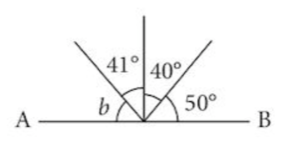 | 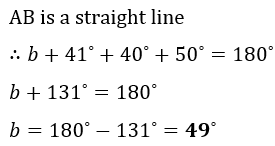 |
| 2. | 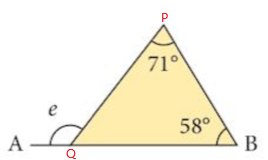 | 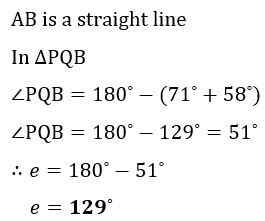 |
| 3. | 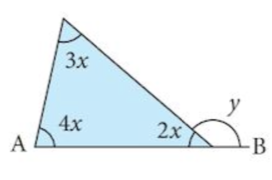 | 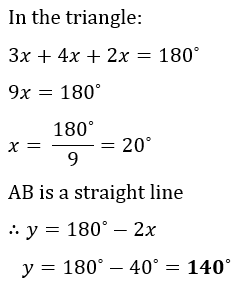 |
| 4. | 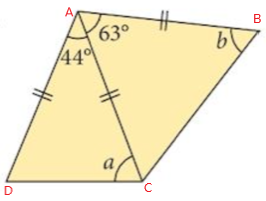 | 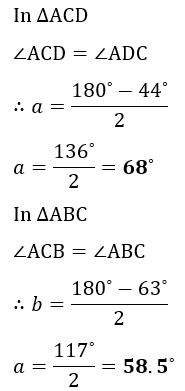 |
| 5. | 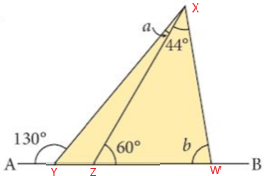 |  |
| 6. | In triangle ABC,∠A is a right angle and D is a point on AC such that BD bisects ∠B. If ∠BDC=100°, Calculate ∠C. 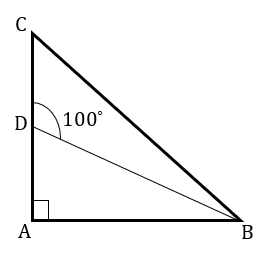 | 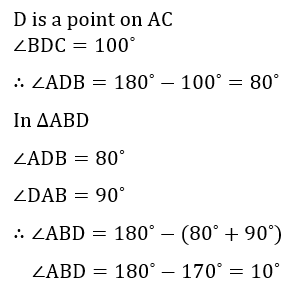 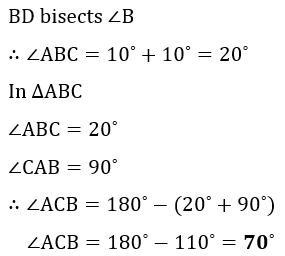 |
| 7. | Triangles ABD, CBD and ADC are all isoceles. Find the angle x. 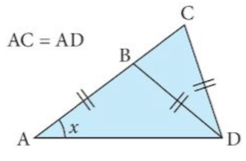 | 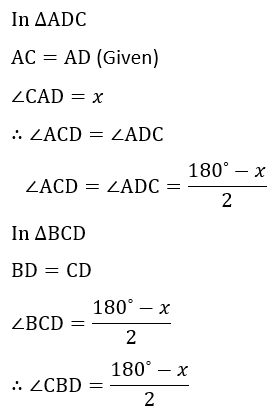 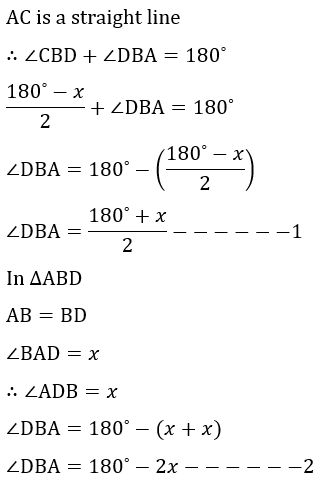  |
| 8. | 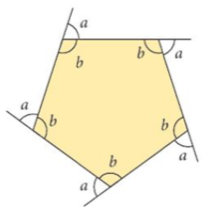 | 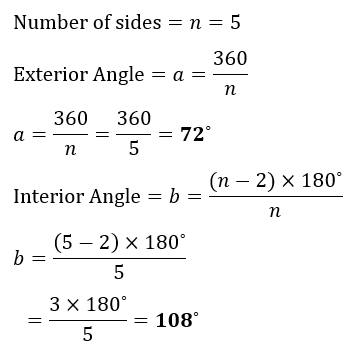 |
| 9. |  | 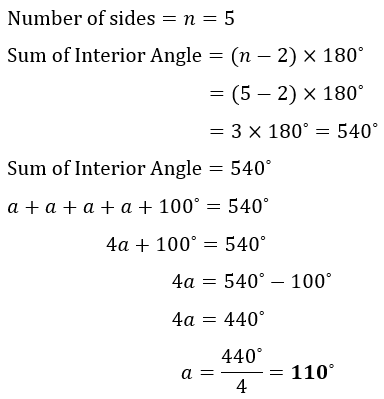 |
| 10. | 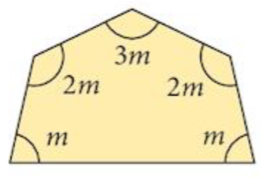 |  |
| 11. | Two sides of a regular pentagon are produced to form the angle x. What is x?  | 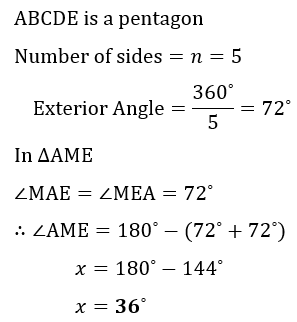 |
| 12. | Angle a is the interior angle of a 20-sided polygon. Angle b is the interior angle of a 15-sided polygon. Calculate the value of angle c. 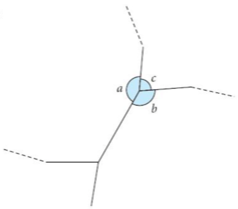 | 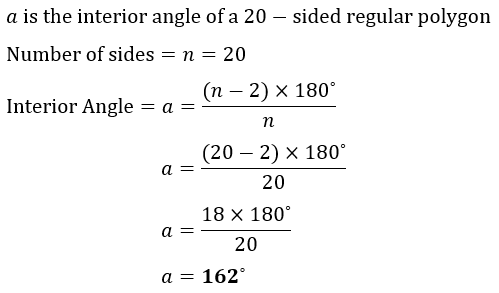 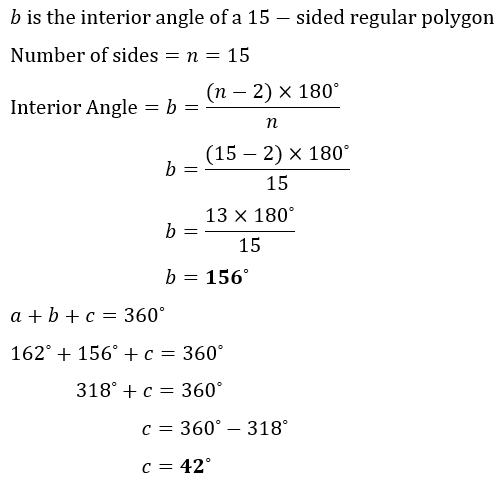 |
| 13. | The diagram shown is formed by joining regular pentagons. Find the angles x and y. 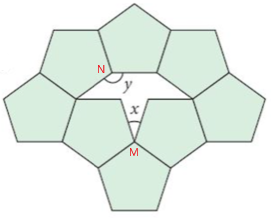 |  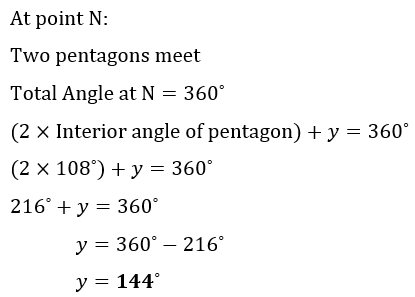 |